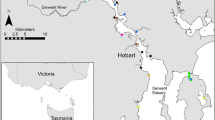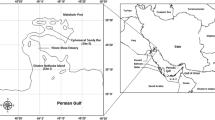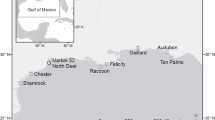Abstract
Environments in Pakistan are subject to increasing pollution, but previous studies were very scanty. During 1999 and 2000, we assessed trace element contamination at three wetlands, Karachi Harbour (with presumed industrial-urban pollution), Taunsa Barrage (agricultural pollution), and Haleji Lake (relatively unpolluted), using as indicators the eggs and the feathers of colonial waterbirds, particularly Little Egrets, their prey, and the sediments collected within their foraging areas. The concentrations of As, Cd, Cr, Pb, Hg, Mn, Se, and Zn were generally within the normal background level, and mostly below the threshold that may affect bird survival or reproduction. However, somewhat high concentrations were found in fish from Karachi, for Pb that was at levels that may harm fish reproduction, and for Hg that was at limit concentration for human consumption. Alarming concentrations were found for Cr and Se in sediments from Karachi, that were above the critical levels for contaminated soil, and Se in eggs, that may affect egret reproduction. The differences among the three wetlands were less marked than hypothesized. The egret species within the same area differed in the concentration of certain elements in their eggs, possibly because females may have foraged in different habitats before breeding, whereas no interspecies difference was found in chick feathers, presumably because their food had been collected in similar habitats around the colony. High bioaccumulation from sediments to organic samples occurred for Hg, while Cd, Se, and Zn exhibited low accumulation; for all these elements, feathers of predatory birds such as the egrets are the best indicators of environmental contamination. On the other hand, As and Cr did not bioaccumulate, and the sediments, or the organisms low in the food chain, like fish or crustaceans, are better indicators of their presence in the environment than predatory birds.
Similar content being viewed by others
Author information
Authors and Affiliations
Rights and permissions
About this article
Cite this article
Boncompagni, ., Muhammad, ., Jabeen, . et al. Egrets as Monitors of Trace-Metal Contamination in Wetlands of Pakistan. Arch Environ Contam Toxicol 45, 399–406 (2003). https://doi.org/10.1007/s00244-003-0198-y
Issue Date:
DOI: https://doi.org/10.1007/s00244-003-0198-y




